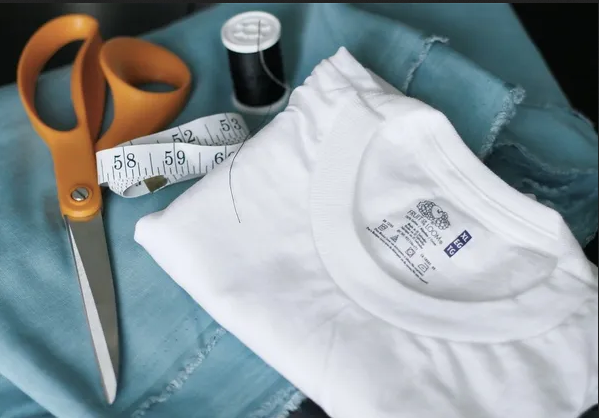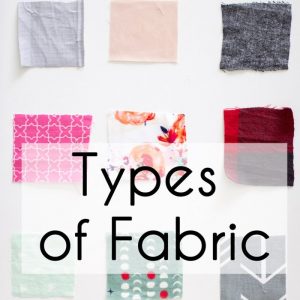
Who doesn’t have a t-shirt in the wardrobe? Have you ever wondered how that simple piece of garment is made and whats the t shirt manufacturing process? T-shirts are that versatile piece of garment that is used the most but talked about, the least. Whenever it is about fashion and styling a large portion of the population likes to dress up wearing a t-shirt. It is comfortable, and trendy and also enables you to maintain the style statement. Lots of fabrics are used in making t-shirts but the most popular one that is widely used is cotton t-shirts.
Cotton is considered the best fabric material for t-shirts as they are easy to dye and retains the colour very nicely. Well, it even blends well with other fibres. So, let’s take a look at the journey from cotton to the customer and how t-shirts are made in this blog.
Usually, we prefer such garments that are comfortable and easy to style. There is at least one cotton t-shirt in the closet. The origin of these tees is even more interesting. You might have noticed that t-shirts come in varied sizes for almost every age group of people from newborns to old senior citizens. Of course, sizes differ, and designs may also differ but the quality is usually the same. Let’s check on the process of making these pieces from scratch.
Step by Step process of manufacturing T-shirts
Contents
Creating durable, classic, and versatile t-shirts includes several steps before it becomes part of your closet. If you carefully notice then the life of a cotton t-shirt actually begins in the cotton fields. That is for 100% cotton ones, however, in some cases, polyesters or other materials may be blended to create another fabric material. Therefore, depending on the material, budget, and process the fabric is first of all obtained. Here are the steps that explain it all in one go:
Step 1: Collecting the Raw Materials for Fabric
Farmers grow the cotton and they use harvesting equipment for collecting the cotton balls from the field. The cotton balls are mechanically twisted from its stem by the machine. Before the invention of this machine, this entire procedure was performed by manual labour which was tiring as well as time-consuming.
Once the cotton balls are plucked from the field they are transferred to a ‘cotton gin’. This gin is just like a large motor that works to separate the seeds from the cotton fibres. This can be considered as the step to collect cotton for further processing. After this step, the cotton is kept in a warehouse until a textile mill buys it for further processing.
Step 2: Processing the raw material
Once a textile mill purchases the cotton from the warehouse the fibres from the cotton bales are twisted. In this step, the cotton bales are twisted at a rate of up to 2,500 revolutions per second for creating a yarn. The yarn is a string of interlocking fibres that is further used for knitting, weaving and performing other textile-related processes. Further, these yarns are stitched together using a looming machine.
The knitted fabric that is obtained after the stitching process of the yarns is known as a grey product. Later, this product undergoes chemical and thermal treatments before it is sent for printing. Let’s understand the processing of raw materials in detail:
- Cotton balls sent to gin: In the first step of the process as already explained cotton balls are put into a gin. In this, the usable cotton is separated from the seeds and chaffs. These days modern gins are quipped with cleaning cylinders and saws due to which they have higher productivity than the previous ones.
- Spinning process: In the next step of processing the cotton balls, the bales of cotton fibres are sent to the spinner where they are spun. Further, they are segregated as carded, combed, and blended. First, the cotton is taken off a picking machine, then the fibres are separated into loose strands before they undergo the carding stage.
- Sent to loom: Once the cotton strands are spun perfectly they are sent to a loom. This is where they are knitted with the weaving process. As a result, a greying fabric is formed. Usually, this is the fabric material that is known as a grey product.
- Conducting wet processing: After the processing in the loom is done, the fabric is further treated with heat and chemicals. This is actually where the fabric undergoes the final touch and gets its final appearance. Also, at this stage inspection is conducted for grey textiles. Generally, the entire process is divided into three stages: Preparation, Colouration, and Finishing. Hence, the fabrics are finished when the desired colouring and softness are achieved.
Step 3: Printing
Printing on cotton is done either using pigments or reactive dyes because it is a natural fibre. Across the fabric, a sizeable printer goes back and forth and deposits the pigment using the pigment printing technique. Thus, the colours you choose will get deposited in layers and then will be applied to the surface like a painting. In the reactive printing technique, dye, water, pressure, and heat is combined together to produce incredibly vivid colours. Once the fabric is washed and pre-treated, an inkjet printer embeds the dye into the cotton fibres deeply. To ensure durability high pressure steam is used that binds everything together.
Step 4: Cutting and sewing
The next stop of printed cotton fabric is for cutting and sewing. As the printing is already done before cutting, the manufacturers have the opportunity to show their creativity and create new designs. In earlier days, large-scale printing after cutting the clothes was quite challenging to execute. In recent times, a specialised machine is used in this process which ensures a high level of precision. During the cutting process, from a larger textile sheet, the shape of the garment is cut. Further, by sewing the outlines together the garment is finished. Below mentioned are a few steps that are involved in the step of cutting and sewing:
- Assembling back and front portion: First, individual pieces are cut from the large textile sheet and then the back and front sections are stitched along the sides. With an overedge stitch, both pieces are linked together for creating a straight, thin, overlaid seam. Carefully, needles are used so that the yarn of the fabric doesn’t get torn.
- Sleeves are completed: The first step was assembling back and front portions together so it was a simpler part because you need to just hem the flat cloth. After the first step, sleeves are completed then only fitting can be adjusted. With the help of an automated mechanism, sleeves reach the sewing head.
- Pockets: Some of the casual t-shirts may have pockets. In the next step of sewing t-shirts, the pockets are kept interlined so that they don’t lose shape. Further interlining is inserted while a pocket is stitched on the front of the t-shirt.
- Neck Bands are sewn: The circumference of the outside edge is lesser than the neck edge. Different necklines have to be stretched accordingly and switched at this stage. By using machines ribbed fabrics are fed in and that is used for creating different necklines.
- Labelling of the t-shirts: In most of the t-shirts onto the inner necklines the label or several labels containing instructions are sewn. It contains details like size, fabric composition, maker, instructions for washing, etc.
- Shoulder seams: Typically, the manufacturers of good quality tees use elastic to strengthen seams. On the basis of the design, the shoulder seams are stitched before or after the neckband is fastened.
Step 5: Finishing
Prior to packaging, steam tunnels are used to press the t-shirts. Basically, the packaging is decided by the desired distribution outlets. Once the tees are carefully pressed they are folded and placed inside pre-printed bags. In most cases, the bags are of transparent materials and contains the information of the tee. Below mentioned are a few steps that are included in the finishing of the product:
- All the thread tails are trimmed and loose threads are removed.
- For checking the quality the stitch quality is checked and in case any defect is found then that piece is removed.
- Under the steam press, the t-shirt is carefully ironed.
- According to the folding dimension, tees are folded.
- Hang tags and price tags are attached using a tag gun.
- Each individual t-shirt is packed into poly bags and further into a carton.
Step 6: To the customer
Once all the above steps are completed successfully the t-shirts are placed into the inventory. When you place an order online then it is pulled out of the inventory and packed accordingly. Further, the package is shipped to your new home.
Over the years t-shirt production process has undergone a substantial amount of advancements. Today, new technology is applied in the processes that have improved the overall quality of the tees. Thus, the manufacturers are able to maintain the quality and at the same time, customers receive high-quality products at lesser prices.
Hope you find this journey of cotton balls from the fields to your hands interesting. Next time when you buy a t-shirt online and get the delivery for once you will remember this journey and cherish wearing your favourite cotton t-shirt!
Frequently Asked Questions
1. Why are cotton t-shirts considered the best?
Cotton is a natural and breathable fabric so the t-shirts made using them are comfortable to wear. That’s why they are considered the best.
2. What is one drawback of cotton t-shirts?
One drawback of cotton t-shirt is that it is natural fibres so it tends to wear down faster than other fibres.
3. How to maintain cotton t-shirts?
You must wash cotton t-shirts less and follow the instructions mentioned in their care label to maintain them for a longer duration.
4. Do I need to iron cotton t-shirts?
Yes, cotton t-shirts tend to get wrinkled easily and that’s why you need to iron regularly to make them appear better without creases.
5. Which is the best season to wear cotton t-shirts?
Summer or hot weather is the best time to wear cotton t-shirts. Cotton fabrics tend to soak up sweat and are also breathable. That’s the reason you can stay comfortable in them in summer.





